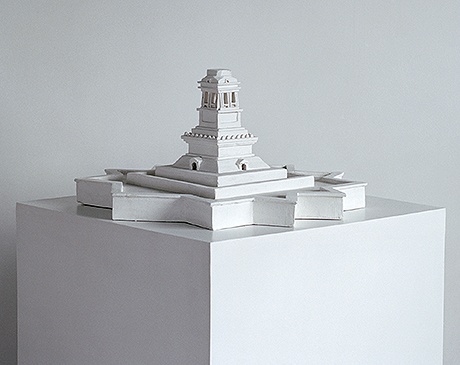Anna Orłowska ‘Case Study: Invisibility’ — exhibition within the project Night Activity
Nocturnal Activities — series of performances in the city Nocturnal Activities is a five month long series of performances in the city, combined with the realisation of ephemeral installations and guerilla...

‘On Invisibility’
Unearthing the backbone of the contemporary conception of power and pointing to the figure of the panopticon as its underlying element, Michel Foucault did not yet write about our contemporary addiction to sight, to a field of vision going beyond virtually any horizon. He did, however, unmistakably recognise the change that had been occurring in the hierarchy of vision due to progress and rationalisation. Since the Promethean rebellion, people, until then seeing little from their caves, had been increasingly able to look from above, gradually usurping the place previously reserved for gods. In the course of this process, the latter were soon to become redundant.
Vision has come to dominate our era as an instrument of defence and aggression. It is this particular sense that drives the Virilian arms race. In this frantic discovery of the field, there is also room for photography. It allows us, after all, to look at the momentary and unique, the hidden and impossible. And allows us to do it together. In the mass stare we become aware of our community, of the possibility of exchanging gazes. And get the illusory sense that we have seen a lot.
The panopticon is becoming real today, an archetype for a vision-centric culture, our ‘big data’ era when all gazes and all images are potentially meaningful and potentially a source of knowledge. Void, too, is full of information today.
Anna Orłowska begins her work precisely with void, namely the black hole – a space never subjugated by the human eye or optical technology, lonely, quirky, rebellious, resistant. Her new series of works deals with invisibility, a quality that seems very rare indeed these days. The artist turns her attention towards the symbiotic relationship that emerges with the development of new forms of vision, as techniques of concealment, camouflage and false reflection become more and more meaningful.
Orłowska glances at the new strategies, touching that which today, and even in a futurological test, raises questions about the future. Initially reserved for gods and nature, invisibility has turned into a mimetic strategy, allowing for social disconnections and concealments.
In the course of her nearly two-year-long investigation, the artist inflects invisibility in the successive chapters, evoking its various images. Besides facts, there are also inventions and half-truths here. The plot goes from Hollywood productions, through hidden and unwanted places such as a psychiatric hospital, the disappearance of the Statue of Liberty, an invisible tank, to the global enigma of disappearing bees. Like in mediaeval beast compendiums, the images are equalled in a single order.
In her investigations, Orłowska does not limit herself to photography; she also outsources, adopts and constructs, all that in order to discover the other side of visual compulsion or a negative of our single sense-dictated knowledge. In this visual quest, photography says a lot about itself, again revealing its irrational aspect which makes us doubt the possibilities of the machine. Like in the 19th-century ghost-raising séances, it serves — with mathematical precision – to fulfil people’s fantasies and illustrate their fears.
The exhibition is accompanied by a commentary prepared by Rafał Lewandowski at the Museum of Private Imagination.
Jakub Śwircz



